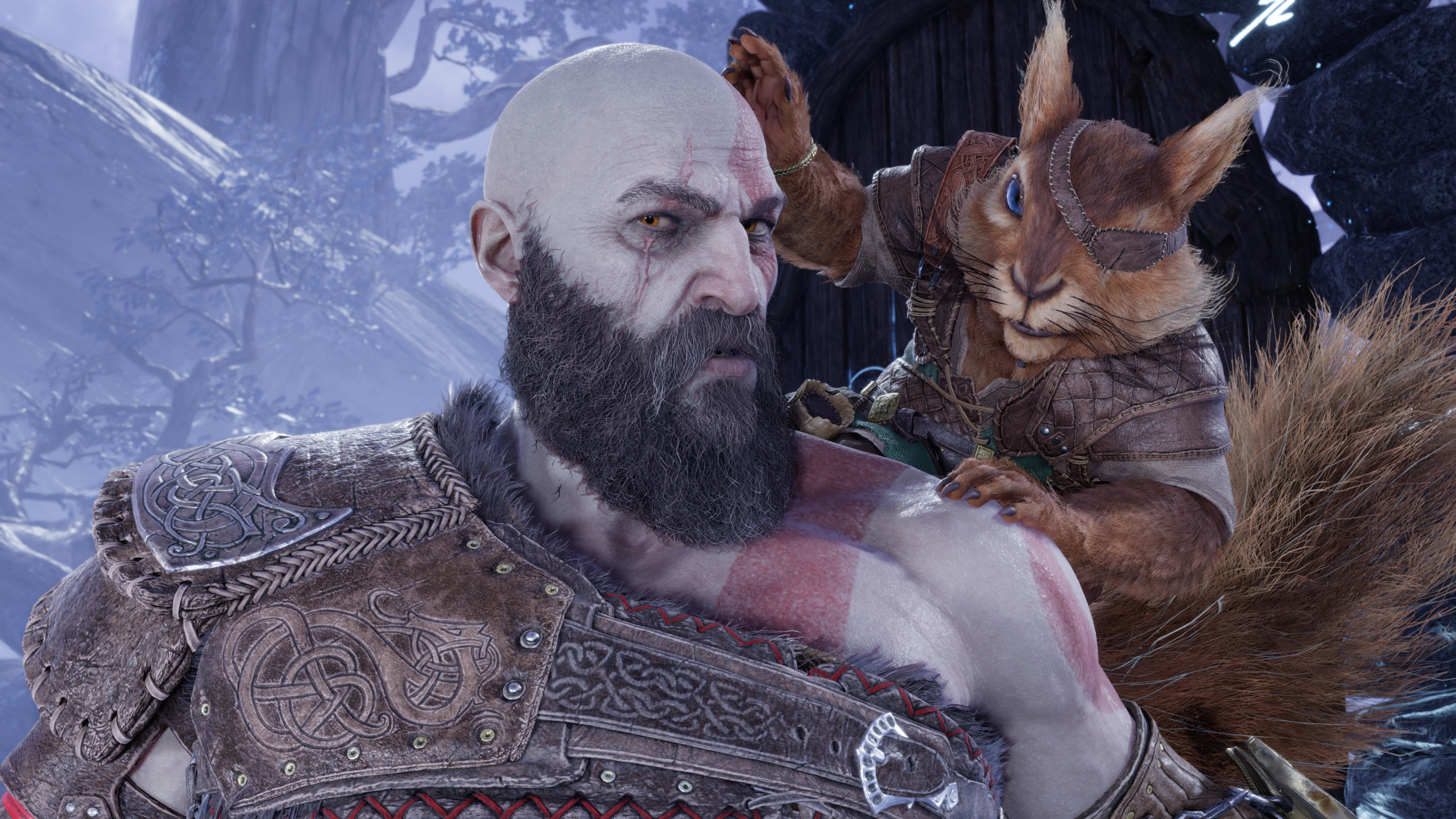Despite the ostensibly modern tone, God of War’s Norse revival has always seemed retro by nature. That 2018 mega-hit, and indeed God of War: Ragnarök, its hugely anticipated follow-up, are Metroidvanias at heart, games that have you explore a world of mazing, criss-crossing tunnels and interlocking paths, that tease you past closed doors waiting to be opened on some later, more empowered return, or through secret ones you never knew existed.
God of War: Ragnarök review
- Developer: Santa Monica Studio
- Publisher: Sony
- Platform: Played on PS5
- Availability: Out 8th November on PS4, PS5.
These worlds live in service to two of video games’ most distinctly video-gamey moments: the “Aha! At last,” of finally smashing that purple obstacle with your new purple spell, and the “Huh! Didn’t expect to wind up here” of emerging into sunlight through the exit of some dark, hidden passageway, pockets clinking with the sound of plundered gold. The result is a curious tension. Of all the recent blockbusters awarded the dubious title of “cinematic experience,” God of War was the one that still carried the untamed heart of a video game.
It might seem a tiny bit facile, but that tension really was the crux of 2018’s game: just as Kratos attempted to move on from a past he looked upon with shame, the series attempted to leave its excessive, often puerile tendencies behind, replacing quick-time-event sex scenes and cartoonish style with a solemn, intimate father-son tale. There’s an argument, however, that God of War maybe over-compensated just a tad, its self-seriousness occasionally turning to a naval-gazing self-regard. But still it couldn’t help itself: Godly skulls were pummelled, wolfman jaws were ripped off, somewhere in there, buried and denied, the old Kratos never really went away.
In Ragnarök that tension continues. If anything its dialled up, in the way that many sequels often are, each of the disparate parts – the size of the world, the length of the story, the number of characters and skill trees, crafting screens, and pixels on the TV – growing exponentially, the emphasis on providing more of what people loved, rather than the balance of how it all knits together. But, crucially, this is a tension Ragnarök aims to resolve. And it does. After taking an awful lot of time to think about it, this game, like its protagonists, realises what it truly is, and finally learns to love itself for it. The result is big and silly – and deliriously satisfying.
